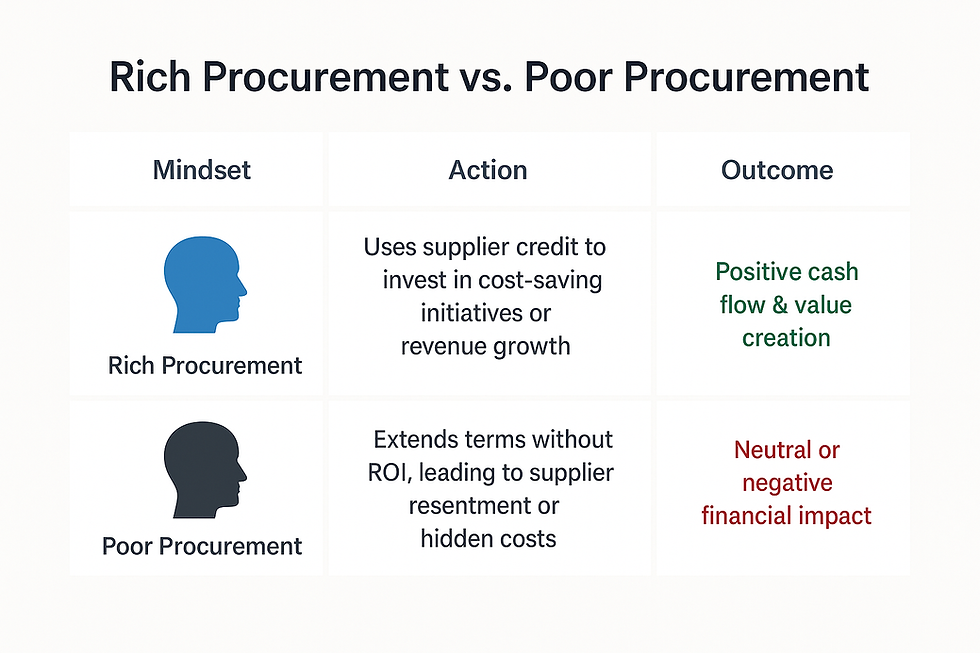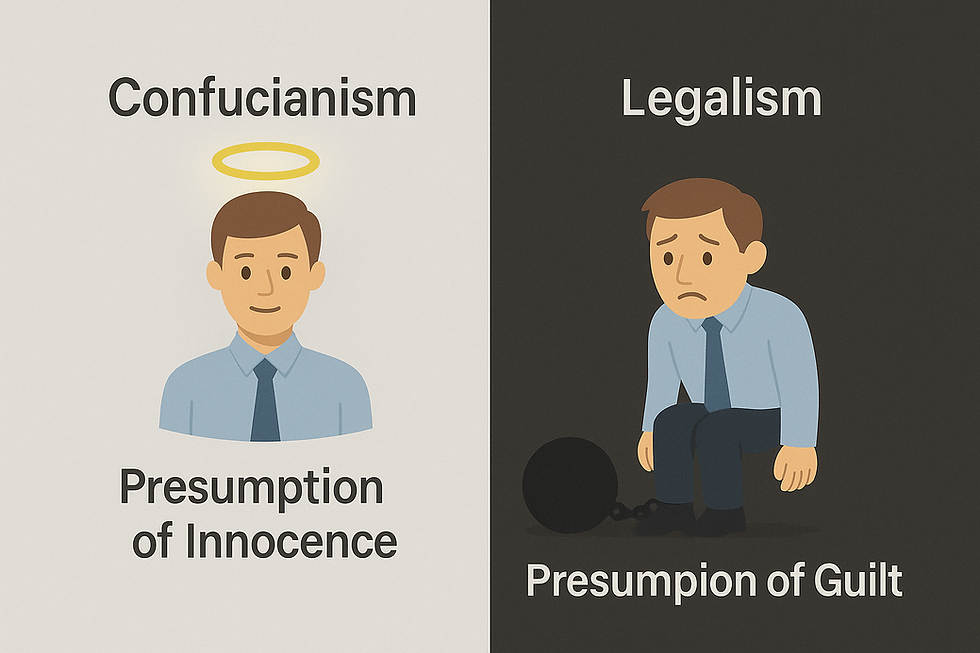Good Debt vs. Bad Debt: What Kiyosaki Can Teach Procurement About Payment Terms
- ukrsedo
- Jul 27
- 3 min read

The rich use debt to grow their wealth. The poor and middle class use debt to buy things that make them poor.
Robert Kiyosaki’s famous line, often debated in personal finance, isn’t just about individuals; it also applies to businesses. It has a powerful parallel in procurement — particularly in how organisations negotiate and use supplier credit.
What if supplier payment terms are just another form of “debt”? Are we using them to generate value, or are we simply deferring expenses?
Let’s start with a simple business case.
The Business Case: Good vs. Bad Debt
Imagine two people, A and B, with different mindsets.
A’s “rich” mindset: A invests $50,000 into 10 vending machines at 5% interest. Each generates $800 per month after maintenance, resulting in a total of $ 96,000 annually overall. Within a year, A pays off the loan and still walks away with a $43,500 profit. This debt created a cash-generating asset.
B’s “poor” mindset: B uses the retail loan to buy an iPhone 17 over 24 monthly instalments. During 24 months, the iPhone depreciates by 44%. This debt is a liability.
A leveraged debt for growth; B spent it on consumption.
Rich and Poor Procurement Mindsets
When procurement negotiates Net 30, Net 60, or Net 90 terms, it’s effectively using supplier credit — a form of short-term, interest-free debt. How that credit is used determines whether it’s an asset or a liability:
“Rich Procurement” mindset: Cash freed up by extended payment terms is reinvested into revenue-generating activities, funding working capital, accelerating product launches, or stockpiling strategic raw materials during price fluctuations.
“Poor Procurement” mindset: Extended terms are used simply to patch cash flow problems without any return on investment. Worse, offsetting these problems onto suppliers may lead to higher pricing or damage relationships.
The House-as-Liability Debate
Kiyosaki calls your own home a liability because it takes money out of your pocket (mortgage, maintenance) instead of generating cash flow. We don't necessarily agree (with his stance on the house acquisition), but this logic also applies in procurement.
A payment term is only an “asset” if it produces financial benefits or savings.
If your company uses the delay to cover losses or fund unproductive operations, that credit is a liability, even if it looks like liquidity on paper.
Negotiation Lessons for Procurement
Kiyosaki’s or any similar philosophy may translate into three practical lessons for procurement payment strategies:
View supplier credit as a tool, not a patch.
Be like A: ensure extended terms are reinvested into cash-generating activities.
Avoid squeezing suppliers for short-term cash gains.
Building sustainable supplier relationships is far more valuable than a few extra days of working capital. Supplier bankruptcies or price increases can erode any benefit.
Quantify the ROI of payment terms.
If you can’t demonstrate how the freed-up cash creates value, your company is effectively acting like B — using debt to “buy liabilities.”
A Value Generation Perspective for Procurement Leaders
This mindset shift — from viewing payment term negotiation as a cash grab to seeing it as strategic leverage — makes our procurement function stand out in the value-generation arena.
It’s not about being the “toughest negotiator”, but the most thoughtful investor of working capital.








Comments